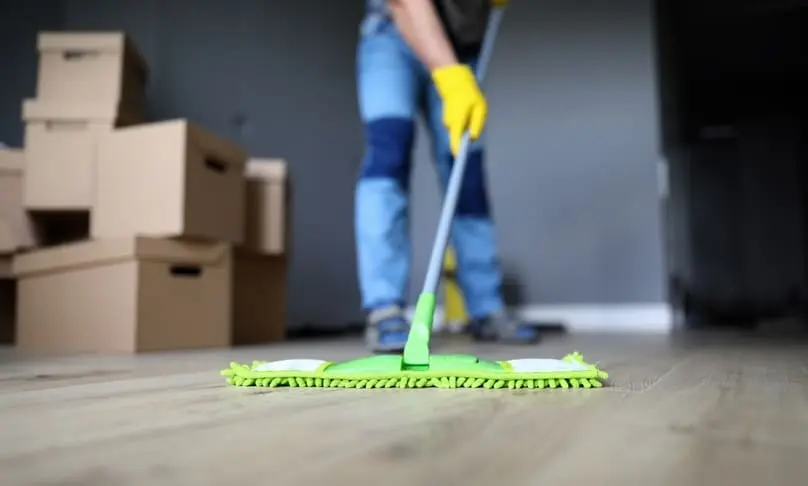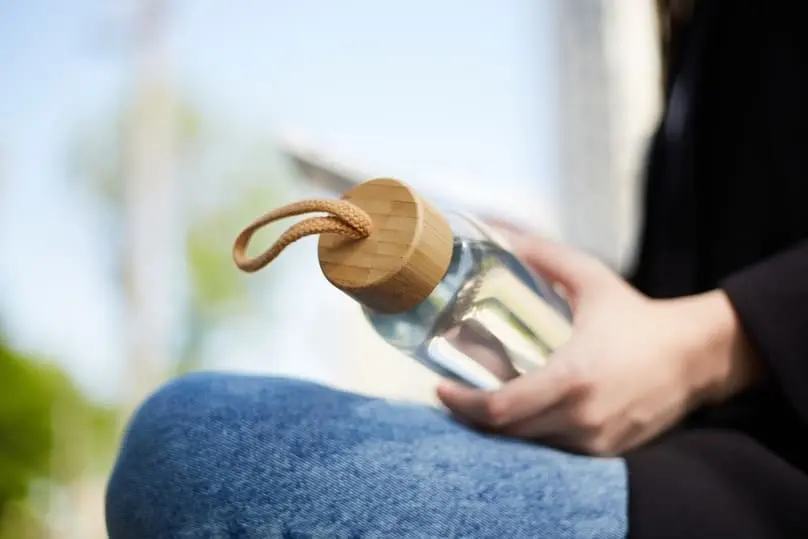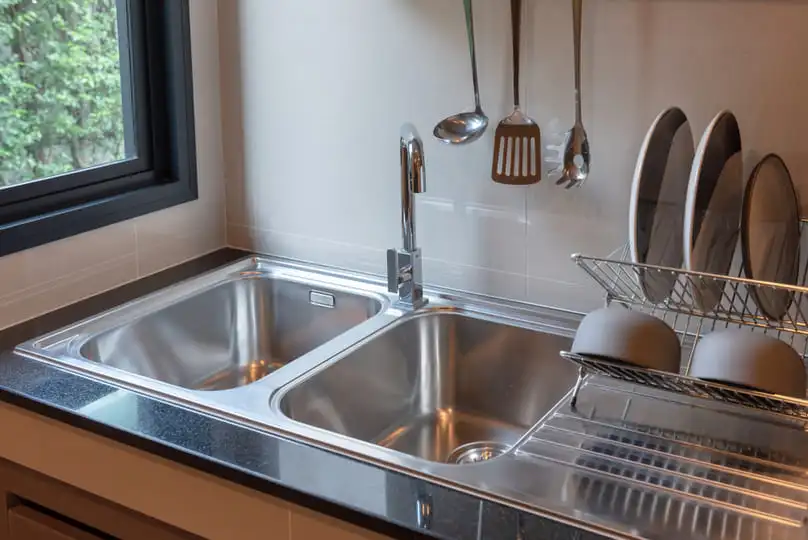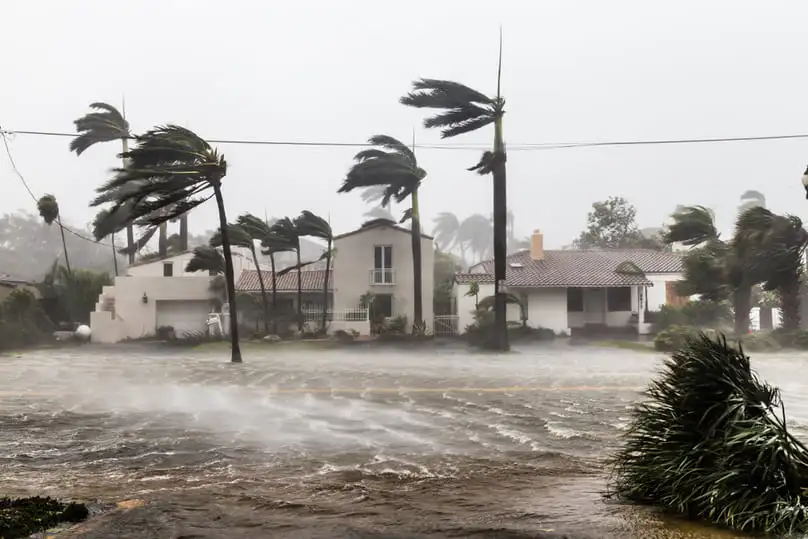A hurricane can change everything in a matter of seconds. Hurricanes are powerful tropical storms that produce wind damage, floods, and health risks. They can disrupt lives and cause significant property damage. Recovery from this type of natural calamity requires time and resources. While the process may be stressful, having a storm cleanup strategy can assist.
Many experts agree that storm damage can occur at any time of year, but we certainly see an increase during hurricane season. Proper preparation during this season is essential, but it’s equally important to know what steps to take after a storm passes through your area for a proper storm clean up.
Do you know what to do after a storm? Yorleny’s Cleaning Services tells you what to do a hurricane cleanup when the storm has passed.
Why Storm Cleanup Matters in Florida
Health and Safety Risks After Hurricanes
A severe storm or hurricane brings serious structural consequences to the affected areas, which can continue to have repercussions even after the storm has passed.
Storm cleanup is important in Florida because it minimizes additional damage, protects public health, and restores safety and community function following extreme weather events such as hurricanes. Prompt cleanup is critical to reducing issues such as mold growth caused by floods, removing risks from falling debris, preventing pest infestations, and ensuring that clogged drainage systems function correctly to avoid more severe flooding.
However, although it may seem contradictory, cleaning up after a storm can be more dangerous than the rain and flooding themselves. We face loose electrical wires, broken and scattered glass, and leaks of harmful gases. Therefore, it is crucial to use protective equipment and safety measures when carrying out these processes.
Protecting Your Home and Property
Storm cleanup in Florida is critical to preventing further damage, lowering long-term repair costs, and ensuring safety following a hurricane. This includes collecting trash, securing your home, and properly maintaining it. Prompt cleanup can help avoid problems like water damage from clogged drainage, structure damage from falling debris, and potential risks from downed trees and electrical lines.
Preparing for Storm Cleanup
First Safety Steps After a Storm
Following a storm, the first safety precautions are to avoid downed power lines and gas leaks, avoid unstable structures, and wear cleanup gear. Always handle downed electrical lines as if they were active, and keep a safe distance. If you smell gas, evacuate immediately. Wear protective equipment such as gloves, goggles, and strong boots to avoid cuts from hidden debris and sharp objects.
Before Cleaning Up
- Stay away from dangers: Do not enter damaged structures or wander through flooded regions, since they may conceal hazards such as sinkholes or live power lines.
- Watch for power lines: Keep a safe distance from any downed wires and notify 911 or your utility company.
- Check for gas leaks: If you hear a hissing sound or smell gas, leave the area right away and don’t use any gadgets, such as cell phones or flashlights, until you’re safely away.
- Evaluate structural damage: Avoid unstable structures that have fractures or shifting walls. Prior to entering a building, wait for an expert to certify it safe.
During Cleanup.
- Wear protective gear: Work gloves, safety glasses, and waterproof boots will keep you safe from sharp items and toxic water. When performing demolition or dusty labor, use an N-95 respirator mask.
- Clean up storm debris cautiously: Be cautious of sharp or broken debris, such as glass and nails, and proceed gently.
- Dispose of chemicals properly: Clean up and dispose of open chemical containers separately.
- Avoid dangerous items: Be mindful of any material that may contain asbestos, such as old floor tiles or insulation, and avoid disturbing it.
- Stay away from wildlife: Do not try to handle any wildlife that has been displaced by the storm.
Supplies Needed to Clean Up After a Flood
Storm cleanup in Florida is necessary to gather supplies for flood cleanup. This includes protective clothing (respirator, gloves, boots, goggles), tools (wet/dry vacuum, shovels, mops, buckets), cleaning solutions (bleach, disinfectant, detergent), and drying equipment (fans, dehumidifiers). Make sure you have flashlights and heavy-duty garbage bags.
These are the supplies and tools that you need:
- Respirator/dust mask: Prevents inhaling mold spores and other airborne pollutants.
- Safety goggles: Protect your eyes from debris and cleaning chemicals.
- Heavy-duty gloves: Protect your hands from chemicals, sharp objects, and contaminated water.
- Waterproof work boots: Keep your feet dry and protected.
- Wet/dry vacuum: Used to remove standing water from floors and carpets.
- Shovels and rakes: For removing mud and debris.
- Mop and broom: Used to clean hard surfaces.
- Buckets: For transporting water and cleaning supplies.
- Squeegee: Used to remove standing water from big, hard surfaces.
- Flashlight: Used in low-light situations to increase visibility.
- Generator: In the absence of electricity, a generator is used to power machinery.
- Carpet Knife: Used to remove damaged carpeting.
- Bleach: A potent disinfectant that should only be used after all filth and debris have been removed.
- Disinfectant and detergent: For cleaning surfaces and washing clothes.
- Heavy-duty garbage bags: To dispose of rubbish and broken things.
- Sponges and paper towels: They are used to scrub and wipe down surfaces.
- Dehumidifiers and fans: Can help dry out the air and surfaces, preventing mold formation.
- Moisture meter: Used to detect hidden moisture in walls and other constructions.
- First-aid kit: To treat any cuts or minor injuries that may arise during cleanup.
- Bottled water: If your water source is affected, use it for drinking and sanitation.
Step-by-Step Guide: How to Clean Up After a Hurricane
Yard and Outdoor Debris Removal
In a post hurricane clean up, first separate and remove major debris such as branches and fallen trees, using caution or employing professionals for larger things. Next, use a rake to remove smaller debris such as leaves and twigs, and then sort all waste into piles for domestic rubbish, yard waste, and hazardous materials.
Finally, if possible, staking injured plants might help them recover.
Roof, Gutters, and Exterior Inspections
Prioritize safety in a storm cleanup by examining your property from the ground. Then, clean the gutters by removing debris, flushing with water, and inspecting for damage.
For roof and exterior inspections, use binoculars or a drone to get a closer look at your roof, walls, windows, and siding for signs of deterioration such as missing shingles or cracks. If you suspect major damage, hire a specialist.
Cleaning and Disinfecting Interiors
To clean and disinfect interiors in a storm cleanup, put on safety gear such as gloves, goggles, and a mask. Then, using soap and water, clean all surfaces to eliminate dirt and debris. Finally, disinfect hard surfaces with a bleach solution (1 cup bleach per gallon of water) or an EPA-registered disinfectant, using sufficient ventilation and adhering to the product’s instructions. For soft materials like carpets or upholstery, professional cleaning may be required, and any items that cannot be adequately cleaned should be thrown.
Mold Prevention and Sanitizing
To prevent mold formation, thoroughly dry everything with fans and dehumidifiers, and eliminate any porous items such as drywall, carpet, and insulation. Always wear personal safety equipment (PPE) throughout the process, including gloves, eye protection, and an N-95 respirator mask, and never mix bleach and ammonia.
Common Mistakes to Avoid During Storm Cleanup
Skipping Mold Prevention Steps
Mold prevention is sometimes overlooked during storm cleanup, resulting in serious health hazards and property damage. To avoid this, respond fast by fully drying all affected areas, using fans and dehumidifiers to eliminate moisture, and inspecting hidden areas such as behind walls for mold.
Proper personal protection equipment (PPE) is also required to avoid exposure to mold spores and cleaning chemicals.
Improper Debris Disposal
Improper debris disposal during storm cleanup includes failing to separate hazardous material, burning debris in a dangerous manner, and obstructing public places. Instead, segregate distinct categories of rubbish, such as hazardous materials, yard waste, and building materials, and follow local disposal rules. Keep heaps away from storm drains and fire hydrants.
Community Resources for Hurricane Recovery in Florida
Local Emergency Contacts and Hotlines
For post-hurricane recovery in Florida, contact DisasterAssistance.gov and call 311 for local and state assistance. For emotional support, the Disaster Distress Helpline is available 24/7 by calling the national emergency number for the helpline. The Florida Disaster Fund is also a source of support for organizations that assist families.
West Palm Beach Recovery Programs
For hurricane recovery in South Florida, residents can access resources through Palm Beach County (such as the Community Response Support Program and the Individuals and Households Assistance Program) and Florida County (such as the My Safe Florida Home program and the Hurricane Loss Mitigation Program).
Assistance is also available through nonprofit organizations like the United Way and emergency services such as the 211 hotline.
FEMA and Disaster Relief Resources
Florida citizens can apply for FEMA aid following a hurricane by calling 800-621-FEMA (3362). The Small Business Administration (SBA) offers low-interest loans, Hope Florida provides housing and immediate needs, the American Red Cross provides shelters and supplies, and the Florida Disaster Recovery Bureau coordinates state and federal initiatives.
DIY vs. Professional Storm Cleanup in South Florida
When DIY Cleanup Is Safe
For minor debris, light dust, or surface water, DIY storm cleanup can be manageable with the right tools and safety precautions. Always wear protective gear, use disinfectants to prevent bacteria growth, and check your home for hidden moisture to avoid mold issues later on.
When to Call Professional Cleanup Services
If your home faces significant debris, water damage, or mold concerns, professional help is the safest choice. Yorleny’s Cleaning Service provides thorough storm cleanup in South Florida, restoring your home to a clean and healthy condition. Our experienced team handles even the toughest jobs with care and efficiency, so you can focus on getting back to normal.
Protect Your Home with Reliable Storm Cleanup
Key Takeaways for Safe and Effective Cleanup
Quick action after a storm is essential to protect your property and prevent long-term damage. Whether it’s drying out damp areas, sanitizing surfaces, or removing outdoor debris, consistent cleanup keeps your Florida home safe and comfortable.
Call Yorleny’s Cleaning Service for Professional Storm Cleanup in South Florida
Don’t wait until water or debris cause bigger problems. Trust Yorleny’s Cleaning Service for reliable, detailed storm cleanup that keeps your home protected.
👉 Contact us today to schedule your post-storm cleaning or request a free estimate from our trusted local team in South Florida.
FAQ: Storm Cleanup in Florida
How long does storm cleanup usually take?
Storm clean up time can range from a few hours to several years, depending on the severity of the storm and the type of damage. Immediate cleanup of fallen branches may take days, however substantial debris clearance and infrastructure rehabilitation might take weeks or months. Rebuilding houses, restoring infrastructure, and recovering from major disasters can take months or even years.
What supplies are essential for hurricane cleanup?
Personal safety equipment (PPE) including hard helmets, gloves, and masks, as well as cleaning items like garbage bags, shovels, disinfectants, and mops, are all necessary storm cleanup gear. You should also keep a kit containing essential personal safety and sanitary supplies, such as flashlights, a first-aid kit, non-perishable food, and water.
Is it safe to clean floodwater without professional help?
Cleaning floodwater without professional assistance is often risky, even in extremely minor circumstances involving only pure water. Floodwater from natural catastrophes or sewage is referred to as “black water” and can carry serious health risks such as bacteria, viruses, and chemicals, which must be handled with specialist equipment and knowledge.
Recent Articles

Move In Cleaning Service vs DIY: Which Saves More Time and Stress?
Moving always brings a mix of emotions. The process feels overwhelming, especially when comparing move in cleaning service vs DIY options. This…

How to Clean Reusable Water Bottles: A Complete Guide for Healthy Hydration Habits
Reusable water bottles have become an essential accessory for those seeking a sustainable and practical way to stay hydrated throughout the day.…

How to Clean Stainless Steel Sink: Shine Without Stains
Stainless steel is present in our kitchens, bathrooms, and appliances because of its durability and modern appearance. If you’ve ever wondered how…
An overview of the areas we serve
See below to check if our top-quality house cleaning services are available in your city and book your first appointment with just a few clicks.
